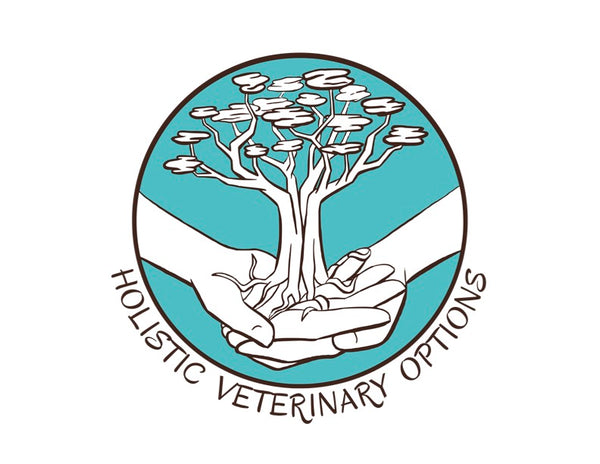Below is a list of ingredients used by the pet food industry. We recommend eliminating as many of these ingredients as possible in your pet food. You can do some research yourself to decide whether you want to feed them or not. We have provided a few links to assist you in that determination. We will continue to add information to this list in the future.
All Rice (except Brown Rice or Rice Bran) - a high calorie filler that has limited nutrient value. Brown rice has the outer shell, oil and germ of the kernel intact. Rice bran is the fibrous outer shell of the kernel that is left over during processing to turn brown rice into white rice. Processing the kernel into white rice means it has lost it's valuable nutritional parts.
Animal Digest - adds palatability to pet food. Created from all animal parts excluding teeth, horns, hooves, feathers and hair. It is a concentrated slew of animal parts that are heat treated and concentrated to use as a flavoring for lower quality foods.
Artificial Colors and Flavor Enhancers - the key word “artificial” (synthetic chemicals). There are natural alternatives most chemicals. Coloring is for human appeal only and should be eliminated from your pet's diet when a natural color is not available. Flavoring is usually added to mask the taste of less appealing ingredients. High quality ingredients are very palatable to most pets.
BHT - Butylated Hydroxtoluene and BHA - Butylated Hydroxanisole are preservatives used to prevent oxidation and rancidity of oils found in food. They may be used together. There is a cancer link to these chemicals and Vitamin E is a natural alternative to eliminating rancidity.
Brewers Rice - a cheap filler composted of rejected or damaged rice kernel pieces, including mill floor sweepings. This product has been processed, so it has low nutritional value and comes from questionable sources. It should be avoided.
By-Product meals - generic protein source that reduces costs to manufacturer - cheap filler. Sometimes it is just listed as meat by-product meal, therefore, if you are trying to eliminate a protein source you will not be able to identify what is in this ingredient. It is very vague and has ever changing sources of protein. When it is species specific it will the low quality parts of that species forming the meal.
Carrageenan - is a component extracted from red seaweed that is used as a thickener, emulsifier and preservative. It has been found to cause stomach irritation with a link to cancer and insulin issues.
Cellulose - is the structural component of plants used as a thickener in pet food. It is in the form of a gum and it is chemically treated to achieve this consistency. Chemical treatment used as part ingredient processing usually leaves chemical residue in that ingredient which can be harmful when your pet is exposed to it on a daily basis.
Copper Sulfate - Copper supplement (Is this used in some small animal food)
Corn Syrup/corn - (sugar) adds palatability and can change the texture of food. These sugary ingredients are completely unnecessary in pet food and have the potential to cause obesity in pets. Pet obesity causes many other health issues and any ingredient that has zero value to your pet's health should be avoided.
Ethoxyquin - is a chemical antioxidant in pet food, but is also a pesticide and used to manufacture rubber. This should be a red flag if you find it in your pet's food. There is a cancer link with this chemical. There are natural preservatives that are used very successfully to preserve pet food such as tocopherols (vitamin E), citric acid (vitamin C), and rosemary extract. Natural preservatives should be your first choice when selecting a pet food.
Farm Raised Fish especially Salmon - because farm raised fish are exposed to contaminated water the fish can contain dioxins and PCBs which are linked to cancer.
Flour - is a binder ingredient. White flour has been substantially processed, so the nutritional value is low and it has no benefit to your pet.
Glutens - are used in pet food to bind the ingredients. They are a low quality protein extracted from grain and have been associated with allergies. They are usually found in low quality pet food and should be avoided.
Glycerine - is a preservative that inhibits mold and a sweetener that increases palatability. It is a byproduct of the soap and bio-fuel industries and the tracability of it's sources are sketchy. It can also contain other chemical contaminants.
MSG - Monosodium Glutamate - adds palatability to food. It is made by fermenting products such as sugar cane and corn. It is used in human food and there is controversy about its use. In pet food the question is "why do you need to increase palatability?"
Nitrates and Nitrites - are preservatives used in pet food and there is a cancer link to both of these chemicals.
Pea Protein - is a cheap protein source for manufacturers that has fueled the grain-free trend for pet food. There is a possible link to enlarged hearts in dogs due to feeding this protein source.
Propylene Glycol - moisture retention in food/feed
Rendered Fat/Animal Fat/Meat Meals - generic protein and fat source - cheap filler
Salt - adds palatability and adds no value in food or feed.
Sodium Hexamethaphosphate - sequestrant (fat preservative) thickener, emulsifier, texturizer, reducer of tooth tartar, softens food
Sorbitol - adds palatability, moisture retention, improves texture
Soy Products - high calorie, cheap protein source, allergen
STPP - Sodium Triphosphate - emulsifier, moisture retention
Sugar, Maltose, Molasses - adds palatability, but is not necessary in pet food and could cause obesity.
TBHQ - Tertiary Butylhydroquinone - preservative for fats and oils
Vegetable Oil - cheap fat source
Xylitol - adds palatability like sugar but is poisonous to dogs
Links to check out:
https://blog.homesalive.ca/bad-dog-food-ingredients-to-avoid
https://mysweetpuppy.net/dangerous-ingredients-pet-food/#Info_graphic

